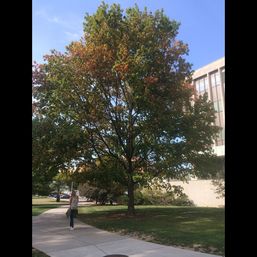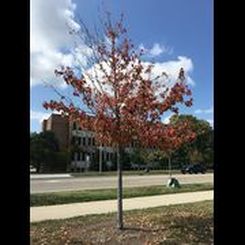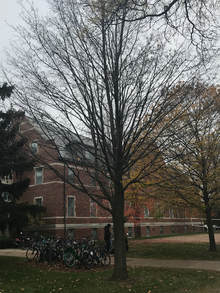Description:
The term technological pedagogical content knowledge was first introduced by Koehler and Mishra to talk about the additional specialised skills that are required to teach in an era that is dominated by technology. While some would argue that teaching has always involved technology - from the simple pen and paper to the more advanced projectors, it is hard to argue that we now live in a time where it is not just the teacher who has access to the latest technology but almost every student as well. And since we are talking about inclusive and active classrooms, it is obvious that we would encourage students to create their knowledge by leveraging the affordances that are made possible by technology.
Putting it in perspective of scientific teaching and inclusive classrooms, technology does have a lot of affordances. I wrote on a different page about how group work can build inclusive classrooms. Technology can help facilitate that. Students can work on group activities virtually and at a time and place that is convenient to them. This is most helpful to students who have jobs or families to attend to. Having access to technology, like a google drive for example, can help them communicate with their group and contribute to the combined construction of knowledge.
An important part of scientific teaching is having students interact with data - collect it, analyse it and visualise it. The various software and programming languages that are available these days make learning those skills not only easy but also interesting. Additionally students can use interactive interfaces to generate and evaluate models that they develop to describe the natural world.
There is an increasing emphasis to cultivate higher order thinking skills in our students. However we will not know if our students are actually using higher order thinking unless we assess it - and this type of thinking cannot be easily measured using multiple choice questions. Therefore, these skills have traditionally been difficult to access, specially in large enrollment classes. However, due to advances in machine learning and automated response assessment, we can now have the ability to measure the degree to which our students are actually demonstrating higher order thinking.
The term technological pedagogical content knowledge was first introduced by Koehler and Mishra to talk about the additional specialised skills that are required to teach in an era that is dominated by technology. While some would argue that teaching has always involved technology - from the simple pen and paper to the more advanced projectors, it is hard to argue that we now live in a time where it is not just the teacher who has access to the latest technology but almost every student as well. And since we are talking about inclusive and active classrooms, it is obvious that we would encourage students to create their knowledge by leveraging the affordances that are made possible by technology.
Putting it in perspective of scientific teaching and inclusive classrooms, technology does have a lot of affordances. I wrote on a different page about how group work can build inclusive classrooms. Technology can help facilitate that. Students can work on group activities virtually and at a time and place that is convenient to them. This is most helpful to students who have jobs or families to attend to. Having access to technology, like a google drive for example, can help them communicate with their group and contribute to the combined construction of knowledge.
An important part of scientific teaching is having students interact with data - collect it, analyse it and visualise it. The various software and programming languages that are available these days make learning those skills not only easy but also interesting. Additionally students can use interactive interfaces to generate and evaluate models that they develop to describe the natural world.
There is an increasing emphasis to cultivate higher order thinking skills in our students. However we will not know if our students are actually using higher order thinking unless we assess it - and this type of thinking cannot be easily measured using multiple choice questions. Therefore, these skills have traditionally been difficult to access, specially in large enrollment classes. However, due to advances in machine learning and automated response assessment, we can now have the ability to measure the degree to which our students are actually demonstrating higher order thinking.
This is how I met the requirements for this competency:
Workshops/Seminars:
Workshops/Seminars:
- Using eye tracking software to improve instructional material design - Dr. Stephen Thomas, Fall 2016
- Technology Tuneup: Tools and Tips for Realigning your Objectives, Assessments, and Teaching Materials for Backward Design - Dr Stephen Thomas, Spring 2018
- Managing Your Digital Identity as a Scholar - Dr. Melissa McDaniels, Spring 2018
|
Artifact and Rationale:
The artifact that I will be reflecting on is a database of tree phenology data that was created by the students of BS162 in the Fall of 2017. The students had to work in groups to collect phenology data about trees on the MSU campus for the entire semester. In groups of 4, students had to click a picture and upload it along with phenological data using a web-form. This activity leveraged some of the best practices in teaching and learning.
In hindsight though, we could have put in some additional procedures to make sure that it was more inclusive. While designing the web-form, we made sure that it would store multiple entries and upload them only when connected to wi-fi. This was done to ensure that students did not have to pay for data usage to complete their assignments. However, we took it for granted that if not all the group members, then at least one would have a smart phone or a digital camera. We did not think of the social pressure that someone who did not have access to these devices would face. If we were to do it again, it would be nice if we could offer devices that students could 'check-out' for an hour or so, and return when the activity was complete. Additionally, access to technology is something we can ask about on the initial survey that students have to take. Based on the responses we can then take steps to ensure that the activity is fair and equitable. |
Images clicked by students of BS162 FS17
|
Reflections:
The diversity of types of technology and the ease of availability has been quite beneficial to building inclusive classrooms that practice scientific teaching. I have personally leveraged technology in ways that would not have been possible a decade ago.
As described above, one of the ways we used technology was to have students collaborate and generate their own data set. Using this method had additional affordances. I could track in real time which groups were actually contributing before the weekly deadline. Since they had to have their data in by midnight every Sunday, I would check the data base every Friday and send out an email that listed number of entries by group for that week. That way they could motivate their group-mates to go and get the data if it had not yet been done. Since every tree was surveyed by more than one group, it also enabled me to quickly do a data quality check. An additional way that I wish I had used to leverage this data, and build enthusiasm was by using social media. Some of the photographs that the students clicked were really artistic - if I do this again, I will construct a Facebook page or an Instagram account to share these images with the class and the world.
Another piece of technology that I have used is google docs. In our research lab, we use google docs to work on collaborative projects like manuscripts. I used this same idea when my students had to work on a research poster. When assessing group work, an important challenge is figuring out who did what. With google docs my task was made much easier. The program has a 'version history' tab. This allowed me to go and see the exact contributions of each of the group members.
The last piece of technology I would like to discuss is CATME. This is a web based tool that is very useful while building inclusive classrooms. We have used this tool while assigning our students to groups. The students have to answer questions about their demographics (sex/race), availability to work outside class, team work habits and any additional question the instructor deems relevant. The tool then pools all the data and creates groups of students based on predetermined criteria. When we used it, we wanted to ensure that people who had similar time availability could be in the same group - this was so that they could gather data and work on assigned homework collaboratively. We also wanted to make sure that there was never just one woman or a person from a minority in a group. CATME allows you to enter all these criteria and then creates the most optimal groups.
While it is clear that there are many affordances that technology offers, we should also be cognisant of certain ways in which to use it. We often see professors using scores of clicker questions in their lectures and thinking that by doing so they are making their classroom more active. However, unless there is a period of reflection and perhaps even discussion, a clicker becomes just another piece of technology that is not really promoting learning.
One of the simple yet very effective practices that I adopted, first in my research talks and then in my teaching is to make sure my presentations are as accessible as possible. If you use PowerPoint, it has an inbuilt 'Accessibility Checker'. Just clicking a button will check for problems with insufficient contrast, absence of titles, reading order or troublesome fonts. Additionally, I always review my slides in grey scale - just to ensure that key information is not indicated solely by colour and therefore is not lost to people who are colourblind. Using such simple techniques will help us leverage technology to ensure that our classrooms are inclusive classrooms that epitomise scientific teaching.
The diversity of types of technology and the ease of availability has been quite beneficial to building inclusive classrooms that practice scientific teaching. I have personally leveraged technology in ways that would not have been possible a decade ago.
As described above, one of the ways we used technology was to have students collaborate and generate their own data set. Using this method had additional affordances. I could track in real time which groups were actually contributing before the weekly deadline. Since they had to have their data in by midnight every Sunday, I would check the data base every Friday and send out an email that listed number of entries by group for that week. That way they could motivate their group-mates to go and get the data if it had not yet been done. Since every tree was surveyed by more than one group, it also enabled me to quickly do a data quality check. An additional way that I wish I had used to leverage this data, and build enthusiasm was by using social media. Some of the photographs that the students clicked were really artistic - if I do this again, I will construct a Facebook page or an Instagram account to share these images with the class and the world.
Another piece of technology that I have used is google docs. In our research lab, we use google docs to work on collaborative projects like manuscripts. I used this same idea when my students had to work on a research poster. When assessing group work, an important challenge is figuring out who did what. With google docs my task was made much easier. The program has a 'version history' tab. This allowed me to go and see the exact contributions of each of the group members.
The last piece of technology I would like to discuss is CATME. This is a web based tool that is very useful while building inclusive classrooms. We have used this tool while assigning our students to groups. The students have to answer questions about their demographics (sex/race), availability to work outside class, team work habits and any additional question the instructor deems relevant. The tool then pools all the data and creates groups of students based on predetermined criteria. When we used it, we wanted to ensure that people who had similar time availability could be in the same group - this was so that they could gather data and work on assigned homework collaboratively. We also wanted to make sure that there was never just one woman or a person from a minority in a group. CATME allows you to enter all these criteria and then creates the most optimal groups.
While it is clear that there are many affordances that technology offers, we should also be cognisant of certain ways in which to use it. We often see professors using scores of clicker questions in their lectures and thinking that by doing so they are making their classroom more active. However, unless there is a period of reflection and perhaps even discussion, a clicker becomes just another piece of technology that is not really promoting learning.
One of the simple yet very effective practices that I adopted, first in my research talks and then in my teaching is to make sure my presentations are as accessible as possible. If you use PowerPoint, it has an inbuilt 'Accessibility Checker'. Just clicking a button will check for problems with insufficient contrast, absence of titles, reading order or troublesome fonts. Additionally, I always review my slides in grey scale - just to ensure that key information is not indicated solely by colour and therefore is not lost to people who are colourblind. Using such simple techniques will help us leverage technology to ensure that our classrooms are inclusive classrooms that epitomise scientific teaching.



